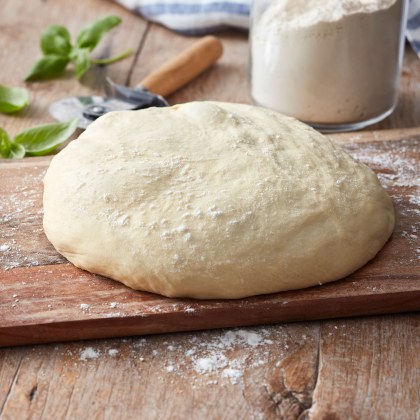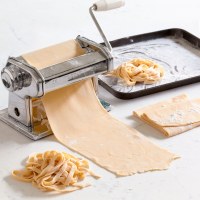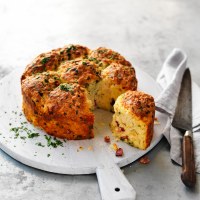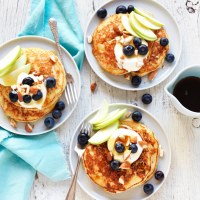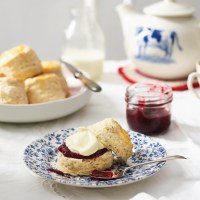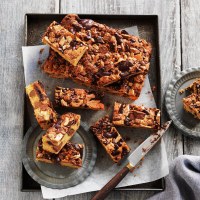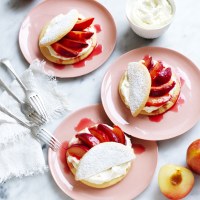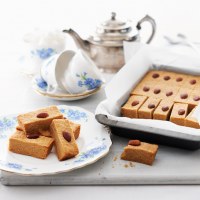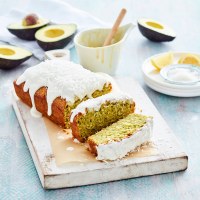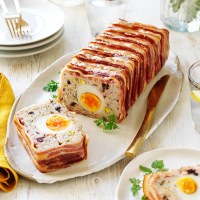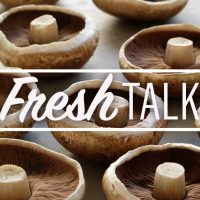The different types of flour
There are so many different types of flour, from plain flour to cake flour to 00 flour... isn't it just ground up wheat? Not to mention the many types of flours made from other grains and nuts. Here's your basic guide to the different types of flour, and why you need them.
The difference between most types of flours is based on how much gluten they contain. What is gluten? Gluten is a protein found in wheat based flours. Gluten bonds together into a net-like structure, and these gluten nets hold the dough or batter together while it bakes. These gluten nets also trap gas, producing a risen cake or airy bread. Gluten is also responsible for providing your baked products with its characteristic crumb in a cake, or chewiness of bread.
Different varieties of flour contain different percentages of gluten which are usually marked on the packet. This determines its best use when cooking baked products. The rule of thumb is the higher the protein (gluten), the better it is for bread and pasta making. The lower the protein, the more suitable it is for cakes, pastries and biscuits.
Now you know the basics of gluten, here's a guide to the most common flours you'll find on the supermarket shelves.
What is plain flour?
Plain flour is also called all-purpose flour, or AP flour. If you only have room for one type of flour, this is the one to get. Plain flour has protein content of around 10-12%, making it a good choice for all types of baking. Plain flour has a shelf life of 6-9 months when stored in the pantry.
What is self-raising flour?
The difference between plain flour and self-raising flour is that self-raising flour has baking powder added to it, which allows it to rise (therefore, it is self-raising). Its shelf life is considerably shorter than plain flour, as the baking powder absorbs moisture from the atmosphere which causes it to lose its rising ability. If you want to know how to make your own self-raising flour, simply sift together 2 teaspoons of baking powder to every one cup of plain flour.
What is wholemeal flour?
Wholemeal flour has undergone similar processing as plain flour, but has had some bran, wheat germ and endosperm added back. This adds to its nutritional content but also shortens its shelf life. Only buy enough to use within one to two months, or store in fridge or freezer.
Wholemeal flour will give your baked goods a nutty flavour, coarser texture and noticeably reduced rise. Using half wholemeal and plain flour is a great way to use wholemeal flour without compromising on the taste and quality of your baked goods.
What is bread flour?
Bread flour is sometimes referred to as “strong flour” because of its higher protein content. This is usually between 12-14% and is perfect to produce the strong gluten strands to produce the characteristic chew, crust and rise in breads and pizza doughs.
What is 00 flour?
00 flour or double zero flour is a very refined wheat flour. Italian milled flour is graded in numbers, and "00" is the finest grade. It is primarily known for its use in pasta making. It is more refined than other flours and contains a moderate level of protein at around 7-9%. If this is not available, you can substitute with plain flour.
What is cake flour?
Cake flour is also sold in Australia as biscuit flour or pastry flour. It is made from softer wheat, which enables it to absorb more moisture and sugar. It has a lower protein level of around 6-9%, producing a softer texture in cakes, a flakier and moist pastry and a perfect crumb in cookies and biscuits.
Should a recipe call for cake flour but you don’t have any, use plain flour and substitute 10% of the quantity with corn flour or potato flour. This will lower the protein percentage and soften the mix.
What are gluten free flours?
Gluten free flours are made up of non-gluten containing grains or nuts such as corn, rice and almonds. See below for a list of some common gluten free flours.
On their own, gluten free flours do not have the elasticity needed to produce a tender, well-risen baked product. Blends of different types of grains can be used to create a flour mix that is more versatile and can work across all types of traditional recipes.
Some gluten free flour blends use a mixture of xanthan gum or guar gum to enhance the baking capabilities. These gums act as a binder and provide some elasticity, helping to trap air within the mix which will produce a better rise.
Since the base ingredients for gluten free flour can be very different, separate brands can produce varied results in baked goods, giving a recipe a completely different taste and texture.
Corn flour
Corn flour is also called cornstarch. This gluten free flour is made from milled corn. It has a very fine texture. For baking, it lightens the texture of the final product. In cooking, it is used as a thickener for sauces, stews and custards.
Arrowroot flour
A gluten free flour made from the arrowroot plant. It is higher in fibre than most other starches and has one and half times the thickening power of plain flour. Great in baking, the major benefit is that it mixes clear on thickening unlike cornflour and plain flour.
Rice flour
A gluten free flour made from finely ground white or brown rice. Its characteristic sweet flavour produces very light and airy textures in cakes, desserts and biscuits.
Almond flour and almond meal
Both flours are derived from the almond nut and are commonly used in gluten free baking. Almond flour and meal are mostly interchangeable in recipes. Almond flour is usually much more finely ground and made only with blanched skinless almonds, giving it a fluffy texture and a crisp white colour. Almond meal is generally coarser and made with unblanched almonds with skin on. This produces a denser, grainier baked product.
Almond flour and almond meal are commonly used as a substitute for plain flour to make a recipe gluten free. To substitute plain flour with almond flour or meal, use a 1:2 ratio of wheat flour to almond flour or meal. That is, use double the amount of almond flour than you would use wheat flour. Almond doesn’t contain gluten, so you will need to increase the amount of eggs to increase binding power.
Almond flour and meal is highly perishable due to its high fat content. Only buy the amount you will be using and store in an airtight container in the fridge or freezer. Return to room temperature before baking.
GET THE RECIPE: Basic Pizza Dough by Perfect Italiano
Pizza dough is so easy to make, and what's even better is that you only need plain, all-purpose flour.
GET THE RECIPE: Wholemeal Date and Walnut Loaf by Australian Eggs
The addition of wholemeal flour gives this loaf a heartier texture and flavour, it also uses self-raising flour to get a great crumb.
GET THE RECIPE: Basic Custard Recipe by Australian Eggs
Traditional custard is thickened using a combination of egg yolks and corn flour.

